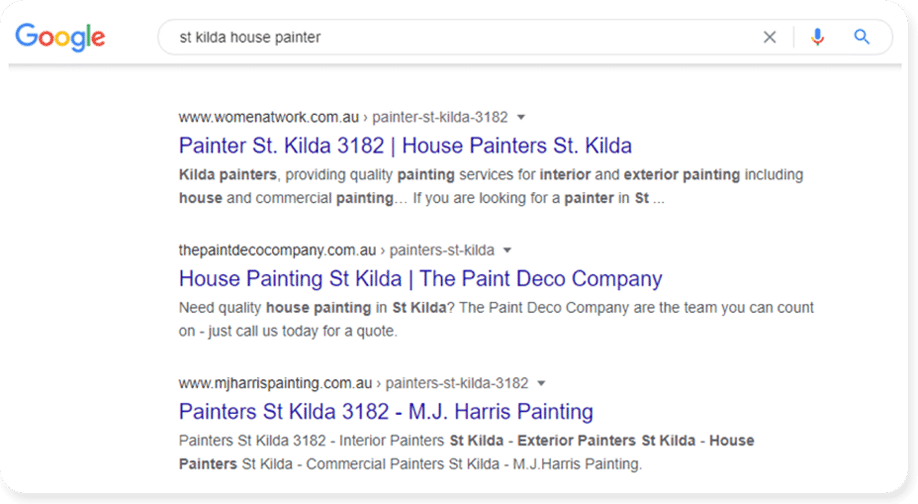How To Start A (Successful) Painting Business In 2024: Marketing Edition
You’ve got the tools, you’ve got the talent, but do you have the strategy you need to make sure your painting business doesn’t become a statistic?
Just as you’d prepare a wall before a paint job, you need to prepare a plan to make sure your new business is set up for success.
Time to brush up on your digital marketing skills, here’s how you start a (successful) painting business…
You’ve been thinking about starting a painting business for a while and the time feels right.
You’ve already got some experience, so it’s not a matter of learning basic skills like cleaning brushes or mixing colors. But so far it’s been tough to find practical, real-world suggestions about launching a new painting business that aren’t painfully obvious.
Because there are plenty of articles and guides online when you Google “How to start a painting business” but they don’t have the specific info you’re after.
They’re mostly full of surface-level tips and superficial suggestions that any tradesperson with half a brain could have guessed.
“Obtain a business license”
Obviously, you’ll need a business license to run a business. That’s like asking someone how to bulk up at the gym and they answer with “eat more”.
The devil’s in the details when it comes to starting a new business. Offering surface-level suggestions isn’t going to help. You need practical tips to help you crack into a ready-made market.
To cover your marketing needs we’ll show you how to:
- Identify your target market
- Figure out your customer’s pain points
- Figuring out your unique selling proposition (USP)
- Create a painting website (in under 60 minutes)
- Generate painting leads from day one
- Use SEO (with zero experience required)
Ready to set your new business up for success? Let’s get into it.

What are the basics of starting your own painting business?
There’s no doubt that your new painting business has future customers already.
With the global paints and coatings market size valued at over $150 billion, there’s no shortage of potential customers.The issue with starting a painting business isn’t the demand – but making sure you’re the one providing the supply.
In this guide, we’re going to assume you already have the basics down. You’re qualified, have your business license and fulfill all legal requirements. So we’re skipping the basics and explaining how to start a successful painting business that’s easy to find online, offers unique value to your customers, and has a system for attracting leads 24/7.
Start by identifying your target market
One of the worst mistakes a painter can make is to assume their service is for “everybody”.
It’s true that people of all ages and backgrounds own homes and businesses that need a lick of paint from time to time, but targeting EVERYONE is too general. If you want to target everyone you won’t be able to refine your message, speak the language of your customers, and identify/solve their problems.
In short, if you try to include everyone you end up excluding everyone.
For example, someone who needs their bathroom walls repainted has a very different painting problem from a project manager who needs a painter to handle a multi-property construction site.
As a painting service provider, you’ll need a plan of attack to find and target different customers like this.
That’s not to say you’ll exclude people who don’t fit your target market. Instead, knowing your target market means you can focus your message, problem-solving abilities, and marketing spend on the people most likely to hire you.
This is the affordable and efficient way to grow your business, not by slapping a “We Paint ANYTHING” sticker on the side of your van then wondering why no one chooses you.
“How do I find my target market?”
Your goal is to offer your painting services to the people most likely to hire you. At this stage, you should already have an idea of the services you want to provide, whether that’s residential, commercial, industrial, or strata.
If you’re still not sure which specific painting services to offer, an easy way to see who’s hiring painters in your area is to research your competition.
What services do your competition offer? What type of customers are they creating content for? How are they marketing their painting business?
Checking out your competition can help you start to figure out what services you’d like to offer too. Remember, you don’t want to be painting everything so narrow down your offering. This might leave you with:
- Interior Painting
- Exterior Painting
- Residential Painting
- Commercial Painting
Your target market will be the people in need of these services. So if you’ve decided not to offer a strata painting service, you won’t need to worry about creating a message for strata managers.
“What if my target market already has a local painter they use?”
That’s a good thing.
Like we said, if you’re not sure how to find your target market, checking out your competition is the easiest way to get started. And if your competition has customers, that means there are people who need painting help in your local area.
Jump on Google and start searching for the services you’re thinking about providing in your local area. For example, “St Kilda house painter”.

It’s clear there are house painters in St. Kilda, which is a sign there are customers too.
Browse the websites you find on Google and see what services they offer, read their reviews, and check out their social media. This will give you a good idea if an existing painting business has a ready-made audience for you to tap into.
“What if I want to offer a service that other painters DON’T offer?”
Absolutely.
Checking out the competition helps you see what’s working, but you might want to stand out by offering a service that isn’t widely offered. You can use your future customers to help you find these types of openings in the market.
Your success as a painter will come down to whether you can help people solve their problems or not – and who knows more about a customer’s problem than the customer?
As a small business, getting feedback from the man on the street is priceless. All the fancy market research tools and competitor analysis software in the world can’t compare with reaching out to people in your local community and asking them what painting problems they are facing, or have faced.
Whether you ask friends and family who paid you to paint their houses, jump on a Facebook Group, or send messages to people who follow you on social media, the goal is to climb inside a potential customer’s head by asking questions like:
- Have you ever needed painting help at home or at work?
- Were you happy with the price or would you have preferred to pay less?
- Did you find the finished paint job matched what you paid?
- What did your last painter do that impressed you?
- What did your last painter do that you were unimpressed by?
- What are you afraid of happening if you don’t find the right painter?
The answers to these questions are known as your customer’s pain points – and they’re the keys to your success.
The importance of understanding your customer’s pain points
Every single customer, in every single industry, has pain points.
These are the itches people can’t scratch. The problems they can’t solve. The issues they’ll pay good money to resolve. These pain points fall into four categories: financial, productivity, processes, and support.
Every problem your customers have will revolve around one or more of these pain points. If your new business can solve these problems, you’ll never be short of customers.
For your new painting business these might look like:
- FINANCIAL: They want to pay less for a painter. They’d rather pay more for quality service. They can’t afford a painter at all.
- PRODUCTIVITY: Their current painter takes too long. They’d rather do the job themselves if it’s faster.
- PROCESSES: They want to paint the office to boost productivity. They want to paint the house to increase the value
- SUPPORT: They feel like their current painter doesn’t understand them. They don’t feel their painter listens
As a new painting business your customers will have very specific problems, for example, “I need my garage painted” but the pain point behind that problem will fall into one of the 4 categories above.
Once you figure out which type of pain point you’re dealing with you can start solving your customer’s REAL problem, not just offer the service they’re asking for on the surface.
Suddenly, your business isn’t just painting a garage – it’s painting a garage faster than the previous painter, which means your customer can get his house on the market sooner and make a sale.
A painter who says “I paint garages” isn’t solving a customer’s problem. But a painter who says “I paint garages within 72 hours so you can get your house on the market” is solving a HUGE problem, and going to land the sale every time.
“How can I figure out my customer’s pain points?”
Starting a painting business with no marketing experience can feel overwhelming, but there are many ways to learn about your customers without spending money, and without any marketing know-how.
To figure out what pain points are driving your customers towards a sale, try using the following research methods.
Online Reviews
Google ‘your painting service + your location’ and browse the painters that pop up. Focus on their reviews to see what feedback customers are leaving. You can find the pros and cons that reveal pain points. Did the customer wish the service was done faster because they were on a deadline? Were they frustrated at the price because it was advertised cheaper elsewhere? Reviews provide your customer’s pain points in their own words.
Customer Surveys
Your customers know their pain points, so why not ask them? You can use a free survey-making template, for example with Typeform. Send this to any friends or family who have used your services to get their feedback. Ask them what problem they hoped to solve with a paint job, what are the top benefits of new paint, what they wished was different about your service, etc.
When you’ve found your customer’s pain points you’ll need to turn them into value-packed solutions. This is known as your Unique Selling Proposition or your USP.

How to identify your Unique Selling Proposition (USP)
Your Unique Selling Proposition (USP) is what makes you one of a kind.
Your painting business will die a slow death without a USP. It’s the elixir of life. Your secret weapon in the painting world
With plenty of other painters to choose from in every city or suburb, you need a USP to stand out – otherwise, why would anyone bother hiring you?
Most painters take this theory and run the wrong way with it.
They think that their USP comes down to the product they use and end up feeling frustrated because every painter in a 100 mile radius is using the same semi-gloss house paint or polyester angle brushes. So they keep telling their customers “we use quality paints” like it makes them stand out.
News flash – ALMOST EVERY PAINTER USES QUALITY PAINTS.
Your USP comes down to who you’re selling to, not what you’re selling.
This is why the first step of identifying your target market is so crucial. Once you know exactly who to market your painting business to, you can build a USP around them.
If you’re targeting homeowners who love their house and want to add value, your USP could be – ‘If we leave paint on your carpets we’ll replace it for free’. Or, maybe your target audience are creative office space managers, so your USP could be ‘Create and choose your custom paint colors for free’.
In the first example you’re speaking to a homeowner’s desire to make their home look better, and their pain of wanting to protect their belongings. In the second example, you’re speaking to an office manager’s desire to update their office and their pain of not being able to be part of the creative process.
It’s not rocket science. Once you have a clear view of your target market, you can figure out what their pain points are. Once you know what their pain points are, you can create a USP to make your business irresistible.
“Will I need a website for my painting business?”
Yep, you’ll need a website for your new painting business.
We know that can feel like a luxury, especially if the reason you’re starting your new painting business is on the back of your red hot word of mouth and people asking you to help them out around the house.
But word of mouth can only sustain your revenue for so long, eventually, you’ll need a way to attract new customers and with 93% of people starting their online experiences with Google, putting a website on Google is a no-brainer.
We could throw stats at you all day, like the fact that 97% of people learn more about a business online than anywhere else. But you can think about your own browsing habits for all the evidence you need.
Think back to the last service you wanted to hire. Maybe it was someone to help around the house, maybe it was something for the kids, or maybe it was a little treat for yourself. Whatever service it was, did you go online and look on Google before you pulled the trigger?
As a professional painter, your customers will do the exact same thing when they want their newly renovated bedroom painted or their retail shop front painted. All research starts on Google, and you need a website to be found on Google.
“How much does a painting website cost?”
If you’re willing to build your own website you can pay under $500 for a professional, SEO-friendly site.
You don’t need experience with web design. Thanks to the rise of website building platforms – all-in-one tools that let you drag and drop your design and pre-populate your site with features – you can get started with a few clicks of your mouse.
Website builders help keep the cost of a new painting website down. It’s natural you’ll want to run a tight ship in the early days of your painting business, and finding ways to reduce costs is a smart idea.
You’ll always want to be cautious when you lower costs though, as this can lead to an equal drop in quality. For example, you wouldn’t go with a set of tyres for your work van that you found on Craigslist for $50.
But you can absolutely leave the world of $5,000 websites behind and build your own site for a handful of dollars using website building platforms.
Think it’s hard to build your own website? Think again. Here’s how you build a website the EASY way
“Which website building platform do you recommend for painters?”
We recommend Pedestal – a website building platform created exclusively for tradies.
If you’ve stumbled onto this site hoping to start a knitting business or a cake-selling business, Pedestal isn’t for you (none of these tips are, to be honest) but for all trade and service businesses – including domestic and commercial painters – Pedestal is ideal.
While most website builders sell themselves on features like “tons of design options” and “make a beautiful site in minutes”, Pedestal was built with the goals of painters in mind.
Sure, a beautiful site is great, but a website that generates regular leads is better.
Pedestal websites generate 26.7% more leads than the average website building platform because they’ve been designed by conversion experts. Each feature you choose is doing a specific job, whether it’s funneling people towards your ‘Request a Quote’ page or building trust between you and your prospects.
You don’t end up getting bogged down choosing colors or deciding where to put pictures. Instead, you pick a ready-made theme for your painting business and launch a site in a couple of hours.
How to generate new painting leads
OK, you’ve figured out what makes your new painting business unique and you’ve set up an awesome website that’s easy to use and shows people all the ways your painting skills can make their life easier.
Now you need to put that USP and that website in front of people.
How do you do that? SEO.
SEO can be a dirty word for plenty of small business owners who have either been scared off by the sky-high prices of some SEO packages, or been burnt by SEO agencies before. As with any service, you’ll generally do better when you go with the pros – but spotting the “good” SEO agencies from the “bad” can be tough.
To make your life easier, there are only TWO features of SEO you’ll need to focus on:
- Content
- Backlinks
The goal is to have your content rank when a prospect types in a painting keyword or keyphrase like ‘how to increase the value of my home with a new paint job’ or ‘affordable bedroom painting near me’.
Check out the jargon-free guide to SEO content here.
And by creating backlinks you can strengthen the ranking potential of your content and move up Google. With 75.1% of clicks going to the top three businesses on Google, that’s going to be a very comfy place for your painting business to be.
Find out how many links you’ll need to get your painting business on top
“Is there a fast way to improve my Google rankings?”
There aren’t many shortcuts in life…but there are a few in SEO.
SEO – the type that puts you in positions one through ten on the first page, can take anywhere from 2 to 6 months, right up to 12 months. In the long run, this is worth it because it brings a constant stream of traffic to your website and that’s how you generate leads on tap.
But as a new painting business, you’d rather not wait 12 months to start getting new leads – and you don’t have to.
Local SEO is a completely different form of SEO that focuses on bringing you work in your local area, city, or suburb. If you’re kicking off your painting business in New York, Local SEO is the process of optimizing your online presence so you pop up when people search for painters in Brooklyn, Queens or Staten Island.
Ready to dominate with Local SEO? Click here for the painters guide to Local SEO (includes free SEO tips to apply today)
30-second recap for busy painters
Reading monster guides about starting a new painting business can be like watching paint dry (i.e not fun) so here’s the quick recap.
The paints and coating industry is estimated to be worth $249 billion by 2027, so there’s a clear demand. To make sure you’re the supply you need to walk before you run.
Start by figuring out who your target audience is and what problems they have. Turn those problems into solutions in the form of your Unique Selling Proposition (USP). At the very least each service you offer should be presented in a way that solves people’s problems.
Next, get a website online. With trade-friendly website builders like Pedestal, this is the easiest step. Finally, turn on a flow of regular leads and customers through SEO.
Starting a new painting business is easy. All you need is a trip to Haymes Paint store. But starting a successful painting business is hard. At least, it was.
With these simple marketing strategies, you’re all set.
Need help applying your new marketing strategies?
Click here to test your eligibility to work with Tradie Digital









